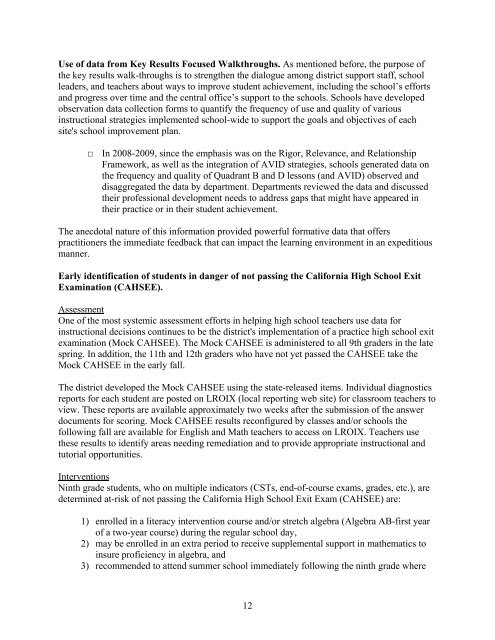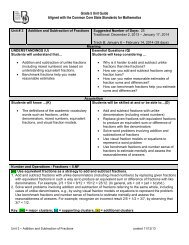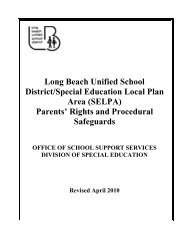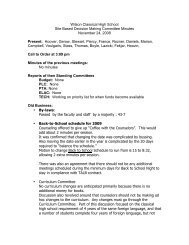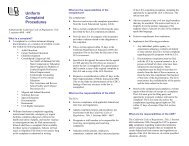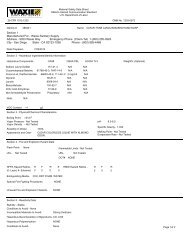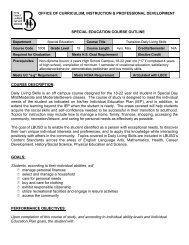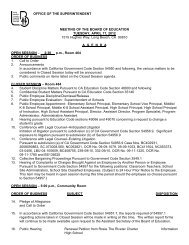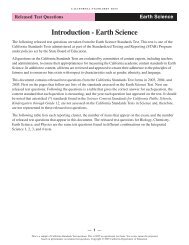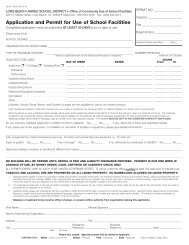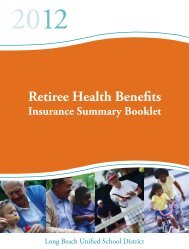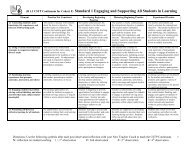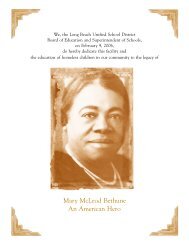Long Beach Unified School District High School Reform Initiative
Long Beach Unified School District High School Reform Initiative
Long Beach Unified School District High School Reform Initiative
You also want an ePaper? Increase the reach of your titles
YUMPU automatically turns print PDFs into web optimized ePapers that Google loves.
Use of data from Key Results Focused Walkthroughs. As mentioned before, the purpose of<br />
the key results walk-throughs is to strengthen the dialogue among district support staff, school<br />
leaders, and teachers about ways to improve student achievement, including the school’s efforts<br />
and progress over time and the central office’s support to the schools. <strong>School</strong>s have developed<br />
observation data collection forms to quantify the frequency of use and quality of various<br />
instructional strategies implemented school-wide to support the goals and objectives of each<br />
site's school improvement plan.<br />
□ In 2008-2009, since the emphasis was on the Rigor, Relevance, and Relationship<br />
Framework, as well as the integration of AVID strategies, schools generated data on<br />
the frequency and quality of Quadrant B and D lessons (and AVID) observed and<br />
disaggregated the data by department. Departments reviewed the data and discussed<br />
their professional development needs to address gaps that might have appeared in<br />
their practice or in their student achievement.<br />
The anecdotal nature of this information provided powerful formative data that offers<br />
practitioners the immediate feedback that can impact the learning environment in an expeditious<br />
manner.<br />
Early identification of students in danger of not passing the California <strong>High</strong> <strong>School</strong> Exit<br />
Examination (CAHSEE).<br />
Assessment<br />
One of the most systemic assessment efforts in helping high school teachers use data for<br />
instructional decisions continues to be the district's implementation of a practice high school exit<br />
examination (Mock CAHSEE). The Mock CAHSEE is administered to all 9th graders in the late<br />
spring. In addition, the 11th and 12th graders who have not yet passed the CAHSEE take the<br />
Mock CAHSEE in the early fall.<br />
The district developed the Mock CAHSEE using the state-released items. Individual diagnostics<br />
reports for each student are posted on LROIX (local reporting web site) for classroom teachers to<br />
view. These reports are available approximately two weeks after the submission of the answer<br />
documents for scoring. Mock CAHSEE results reconfigured by classes and/or schools the<br />
following fall are available for English and Math teachers to access on LROIX. Teachers use<br />
these results to identify areas needing remediation and to provide appropriate instructional and<br />
tutorial opportunities.<br />
Interventions<br />
Ninth grade students, who on multiple indicators (CSTs, end-of-course exams, grades, etc.), are<br />
determined at-risk of not passing the California <strong>High</strong> <strong>School</strong> Exit Exam (CAHSEE) are:<br />
1) enrolled in a literacy intervention course and/or stretch algebra (Algebra AB-first year<br />
of a two-year course) during the regular school day,<br />
2) may be enrolled in an extra period to receive supplemental support in mathematics to<br />
insure proficiency in algebra, and<br />
3) recommended to attend summer school immediately following the ninth grade where<br />
12


